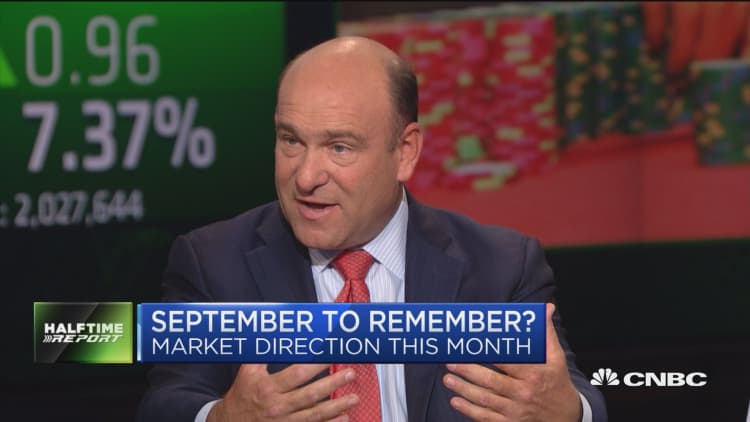
A shocking contraction in August manufacturing activity pushed back some market expectations that the Fed could hike rates in September and raised new questions about the health of the economy.
The ISM manufacturing survey fell to 49.4 when it was expected at 52. Any reading below 50 is a sign of contraction.
"It's nasty. It really is a tale of two economies still. That's the issue. The consumer is doing fine," said Diane Swonk, CEO of DS Economics. "It's not going to determine what the Fed does. It's a signal that we've already seen ... that the manufacturing sector continues to struggle." Swonk said she was also watching August auto sales Thursday as a gauge of consumer spending, and they were expected to decline 3 percent.
The report immediately knocked stock prices and clipped Treasury yields. The Fed-sensitive 2-year yield fell to below 0.80 percent from 0.82 percent and the 10-year yield, firmly above 1.60 percent earlier, fell to 1.58 percent. The dollar also moved lower. The Dow was down as much as 100 points and bank stocks cratered. Financials had been rising recently on expectations of higher interest rates.
The crummy data come a day before the important August employment report, expected to be a major indicator for whether the Fed could raise rates in September. While some traders speculated the manufacturing report was a one-time blip, the data definitely subdued some talk that the economy was strong enough for the central bank to hike.
"The market was pretty nervous about tomorrow," said John Briggs, head of strategy at RBS. The talk among traders has been a jobs number over 200,000 could raise the odds of a September hike pretty sharply. "Before ISM, the rate hike probability for September was 40 percent, and now it's back to 34 percent again."
Economists are expecting 180,000 nonfarm payrolls for August.
The poor ISM report comes on the heels of another weak report. Earlier, the government announced a steeper-than-initially expected decline in worker productivity, in what has been the longest dip in productivity since the 1970s. Nonfarm business productivity fell at a 0.6 percent seasonally adjusted annual rate in the second quarter, from an earlier estimate of a drop of 0.5 percent.
But the Labor Department also reported a surprise jump in labor costs, with the annual rate of unit labor costs rising to 4.3 percent at nonfarm businesses. The initial estimate was a 2 percent pace. Hourly compensation in the second quarter grew at a rate of 1.1 percent on an inflation-adjusted basis, from an earlier estimate that it had declined at a 1.1 percent rate.
"It's horrible and the costs are going up. It's really hard on margins. This doesn't suggest there's a lot of pricing pressures either," said Swonk. Construction spending, meanwhile, contained one bright spot. It was basically flat in July, but June was revised from a decline of 0.6 percent to a gain of 0.9 percent. May was also revised higher.


